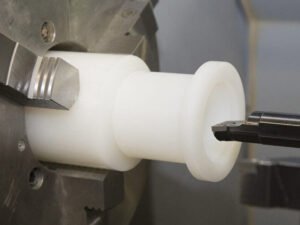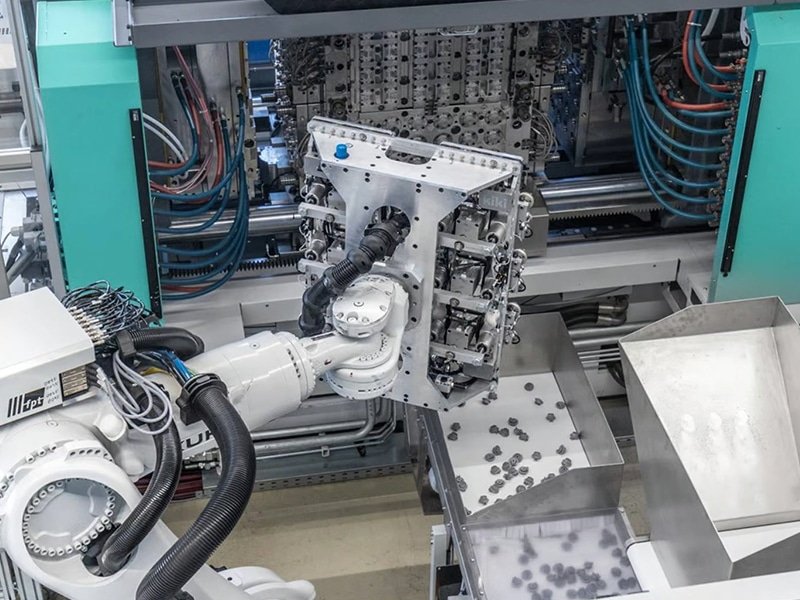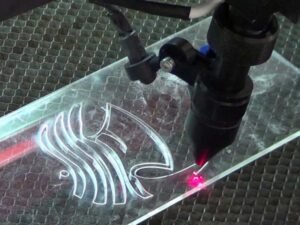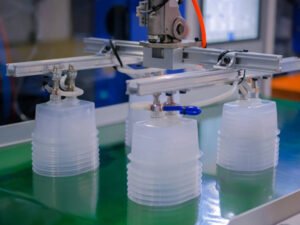On-demand manufacturing offering a flexible and efficient alternative to traditional manufacturing models. This innovative approach allows businesses to produce goods only when needed, minimizing waste, reducing inventory costs, and responding swiftly to market demands. By leveraging advanced technologies such as 3D printing, CNC machining, and cloud-based platforms, on-demand production enables rapid prototyping and customization, making it an ideal solution for both small and large businesses.
What is On Demand Manufacturing?
On-demand manufacturing, also known as manufacturing on demand, custom manufacturing, or cloud manufacturing, is a production model where products are made only when needed and in the required quantities. Unlike traditional manufacturing, which involves producing large batches of products and storing them until they are sold, on-demand manufacturing responds directly to customer orders, minimizing overproduction and excess inventory.
The core advantage of on-demand manufacturing lies in its flexibility and responsiveness. It allows companies to adapt to changing market demands, reduce lead times, and offer personalized products, which are increasingly valued by customers. This approach is particularly beneficial for smaller businesses, as it reduces the need for large initial investments in tooling and setup, enabling cost-effective low-volume production. However, even larger companies can benefit from the reduced risks of overproduction and the ability to focus on core competencies, avoiding the waste often associated with traditional production methods.
How Does On Demand Manufacturing Work?
On-demand manufacturing operates on a simple yet highly efficient principle: products are only made after a customer places an order. Unlike traditional manufacturing, which involves mass production and storing items in warehouses, on-demand production is triggered by customer demand. Once an order is placed, companies forward the request to the manufacturer, and the production process begins immediately. Typically, customers pay upfront for the products, and the production quantities are directly aligned with the order specifications.
The use of cloud technology makes the process even more seamless, allowing users to track, modify, and share project details remotely. Whether it’s changing delivery details, adjusting delivery speed, or collaborating with team members, everything can be done in real-time. This streamlined and transparent process is one of the key reasons why on-demand manufacturing is becoming increasingly popular across various industries.
What Are the Technologies Used in On-Demand Manufacturing
On-demand manufacturing relies on a variety of technologies to deliver efficient, flexible, and high-quality products tailored to customer specifications. These technologies enable manufacturers to produce items quickly and cost-effectively, without the need for large-scale inventory or upfront tooling costs. Below are some of the most essential technologies.
1. 3D Printing (Additive Manufacturing)
3D printing is one of the most widely recognized technologies used in on-demand manufacturing. This process creates parts layer by layer from a digital model, making it ideal for custom, low-volume production. It’s particularly useful for rapid prototyping, creating one-off parts, and small batch production, all while minimizing material waste.

2. CNC Machining (Computer Numerical Control)
CNC technology is vital for on-demand manufacturing as it enables the production of parts with high accuracy and repeatability. It’s widely used for producing metal parts and components that require tight tolerances, making it a go-to solution for industries like aerospace, automotive, and medical. CNC machining is especially beneficial for low-to-medium volume production, providing flexibility without the high tooling costs of traditional methods.
Learn the guide for CNC Machining Manufacturing and Design Guide.

While traditionally associated with large-volume production, on-demand injection molding has evolved with advancements in technology. For on-demand manufacturing, injection molding can be used for small production runs or rapid prototyping, thanks to advances in mold-making techniques and 3D-printed mold inserts. The ability to produce high-quality parts quickly and cost-effectively is what makes injection molding a powerful tool for on-demand production, especially for industries requiring durable, high-performance parts.
Learn the guide for Injection Molding Manufacturing Process and Design Guide.

4. Laser Cutting and Laser Engraving
Laser cutting and engraving are ideal for creating intricate shapes, patterns, and designs in a variety of materials, including metals, plastics, and ceramics. Laser cutting is particularly useful for producing flat components or parts with complex geometries, while laser engraving is commonly used for adding custom markings, branding, or text to parts. The precision and speed of laser technology make it an essential part of the on-demand manufacturing toolkit.

5. Robotics and Automation
Automation and robotics are increasingly being integrated into on-demand manufacturing to improve speed, accuracy, and consistency. Robots can perform tasks such as assembly, inspection, and quality control, allowing for faster production cycles and minimizing human error. Automated systems also reduce the need for manual labor, lowering labor costs and increasing overall productivity.

Advantages of On-Demand Manufacturing
On-demand manufacturing offers numerous benefits that make it an attractive solution for companies of all sizes, especially in today’s fast-paced and competitive market. Below are some of the key benefits of on-demand manufacturing.
1. Flexibility in Production Volume
On-demand manufacturing offers unparalleled flexibility when it comes to production volume, allowing businesses to easily adjust production volumes based on demand. Companies can start with small production runs and scale up as needed without worrying about excess inventory or unused capacity. This scalability is ideal for businesses experiencing fluctuating demand or seasonal peaks.
2. Faster Time-to-Market
On-demand manufacturing, especially when combined with technologies like 3D printing and CNC machining, allows for rapid prototyping and faster production cycles. As a result, businesses can quickly respond to customer needs, significantly shortening the time it takes to bring products to market, and stay ahead of the competition.
3. Customization and Flexibility
On-demand manufacturing allows for tailored products that meet the specific needs and preferences of customers. Whether it’s a unique design, specific material requirements, or personalized features, on-demand manufacturing can accommodate a wide range of customization requests.
4. Support for Innovation and Prototyping
For businesses that prioritize innovation, on-demand manufacturing provides an ideal environment for rapid prototyping and iterative development. Whether you’re testing new designs, exploring different materials, or refining product features, on-demand manufacturing enables quick adjustments and immediate production of prototype parts. This not only accelerates the innovation process but also reduces the time and cost involved in bringing new ideas to market.
Drawbacks of On-Demand Manufacturing
While on-demand manufacturing offers numerous benefits, it’s important to consider the challenges that may arise with this approach.
1. Higher Unit Costs for Small Runs
Small production runs, unit costs can be higher compared to traditional mass production methods. Since on-demand production is typically done in smaller quantities, manufacturers may not benefit from the economies of scale that come with large volume orders. For products that require specialized materials, intricate designs, or time-consuming processes, the cost per unit can be elevated. This can make it less ideal for companies with high-volume production needs, as the cost per item may outweigh the benefits of using the on-demand model.
2. Dependence on Technology
On-demand manufacturing heavily relies on advanced technologies like 3D printing, CNC machining, and cloud-based platforms for order management. While these technologies provide substantial benefits, they also come with certain risks. For instance, equipment malfunctions, software glitches, or connectivity issues could cause delays in production. Additionally, the reliance on digital platforms for design and order processing may pose security risks, especially if proper data protection measures are not in place.
3. Risk of Supply Chain Disruptions
Supply chain disruptions due to material shortages, shipping delays, or unforeseen circumstances can still impact the timely production and delivery of on-demand goods. Businesses must carefully monitor their supply chain partners and ensure they have contingency plans in place in case of disruptions. Having a reliable network of suppliers and backup options is essential to minimizing the impact of such challenges.
4. Intellectual Property Concerns
With the increased use of digital platforms and the sharing of design specifications, businesses may face intellectual property (IP) concerns when using on-demand manufacturing. Companies need to implement strict agreements with their manufacturing partners to protect proprietary information and ensure that designs are not replicated or used without permission.
On Demand Manufacturing vs Traditional Manufacturing
On-demand manufacturing offers significant advantages over traditional manufacturing, particularly in terms of flexibility and efficiency. Unlike the traditional model, which often relies on mass production and large quantities to reduce unit costs, on-demand manufacturing produces goods only when required, which minimizes overproduction and excess inventory. This approach allows businesses to respond quickly to customer demand, customize products as needed, and shorten lead times. It eliminates the need for expensive warehousing and offers a cost-effective solution for small batches, making it ideal for businesses that need flexibility and rapid turnaround times.
While traditional manufacturing is well-suited for high-volume production and economies of scale, it comes with higher upfront costs, longer lead times, and a greater risk of waste. On-demand manufacturing, on the other hand, leverages technology and cloud platforms to streamline the production process, providing real-time quotes, design adjustments, and direct access to manufacturers.
Below is a detailed comparison highlighting their key differences.
| Feature | Traditional Manufacturing | On-Demand Manufacturing |
|---|---|---|
| Production Timing | Produces in bulk based on forecasts; long lead times. | Produces only after an order is placed; quick turnaround. |
| Flexibility | Limited flexibility; changes require retooling. | Highly flexible; easily accommodates custom orders. |
| Cost Structure | Economies of scale reduce per-unit costs, but high initial investment is needed. | Higher per-unit costs for small batches; lower overall costs due to reduced inventory. |
| Inventory Management | Requires significant inventory storage and management. | Minimal to no inventory; products are made to order. |
| Customization | Limited customization options; mass-produced items. | High customization potential; tailored products based on customer specifications. |
| Risk of Overproduction | High risk of excess inventory leading to waste. | Low risk of overproduction; aligns production with actual demand. |
| Technology Utilization | Relies on traditional methods like machining and injection molding. | Utilizes advanced technologies like 3D printing and IoT for efficient production. |
| Lead Times | Longer lead times due to setup and production planning. | Shorter lead times as production starts immediately after order placement. |
Best Practices for Implementing On-Demand Manufacturing
When implementing on-demand manufacturing, companies should consider a few best practices to maximize efficiency, reduce costs, and ensure product quality.
- Consider the constraints of on-demand manufacturing technologies during the design phase to optimize production costs and material usage.
- Choose materials that align with both your budget and production needs. This reduces costs while ensuring the product meets requirements.
- Prototype products using rapid manufacturing technologies to validate the design before committing to full production.
- Partner with experienced manufacturers who understand the nuances of on-demand production and can guide you through the process.
On Demand Manufacturing with Erye
At Erye, we specialize in providing comprehensive on-demand manufacturing services tailored to meet the unique needs of our clients. From small-batch production to customized components.
Here is a overview of how we works:
- Upload 3D CAD models and 2D drawings, if required, for the part(s) you need to be quoted
- Review the quote and the DFM suggestions if needed
- Once the order is placed, the product goes directly into manufacturing and track your orders.
For further questions, you can contact us.
Conclusion
On-demand manufacturing offers a flexible, cost-effective solution that allows businesses to produce only what they need when they need it. By eliminating the risks of overproduction, reducing lead times, and enabling rapid prototyping, it’s an ideal choice for companies seeking agility and innovation.







